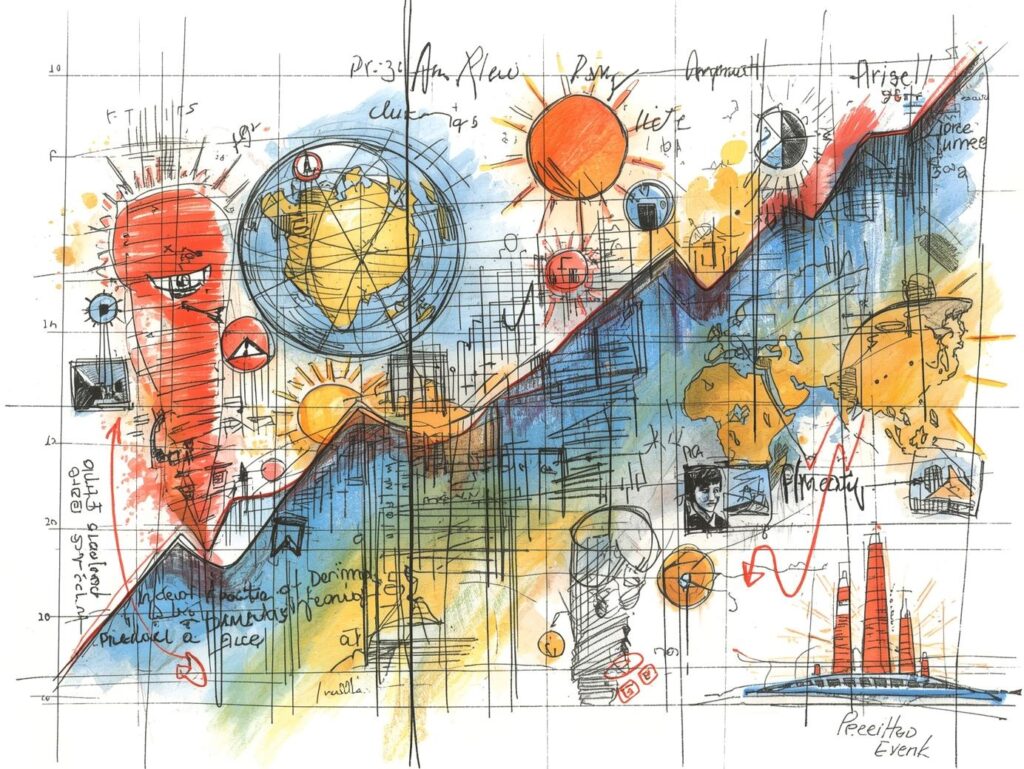Introduction
In the era of big data and artificial intelligence, predictive analytics has emerged as a powerful tool to anticipate trends, optimize resources, and inform decision-making. Beyond business applications, predictive analytics is transforming social and environmental initiatives, allowing organizations, governments, and communities to act proactively rather than reactively.
For organizations like CHUYA SONCCO, predictive analytics is not just a technical tool—it is a strategic enabler for designing interventions that are more effective, inclusive, and sustainable.
What is Predictive Analytics?
Predictive analytics involves using historical and real-time data to forecast future outcomes. By applying statistical models, machine learning algorithms, and data visualization techniques, organizations can:
- Identify patterns and correlations in complex datasets.
- Forecast potential risks or opportunities.
- Optimize decision-making for maximum social and environmental benefit.
In the context of social and environmental development, predictive analytics allows stakeholders to anticipate challenges, allocate resources efficiently, and measure impact accurately.

Applications for Social Impact
1. Public Health and Disease Prevention
- Predictive models analyze health data, population density, and environmental factors to anticipate disease outbreaks.
- Early warnings enable targeted interventions, vaccination campaigns, and resource allocation.
- Example: Forecasting dengue or malaria outbreaks in rural communities.
2. Education and Community Development
- Data from schools, surveys, and digital platforms can predict dropout rates, learning gaps, and community needs.
- Organizations can implement proactive support programs for at-risk students.
- Example: Identifying regions where digital literacy initiatives are most needed.
3. Social Services and Poverty Reduction
- Predictive analytics helps governments and NGOs identify vulnerable populations and forecast the impact of social programs.
- Optimizes distribution of food, housing, and health services.
- Example: Forecasting areas at risk of food insecurity during seasonal changes.
Applications for Environmental Impact
1. Climate and Weather Forecasting
- AI models predict extreme weather events such as floods, droughts, and hurricanes, enabling timely interventions.
- Communities and local governments can plan disaster risk reduction and emergency response.
2. Sustainable Agriculture
- Predictive analytics in agriculture improves crop yield forecasts, water usage, and pest control.
- Helps farmers adopt climate-smart practices for long-term sustainability.
3. Natural Resource Management
- Data from satellites, sensors, and drones can predict deforestation, water scarcity, and biodiversity threats.
- Supports the design of conservation strategies and sustainable land-use planning.
4. Energy and Resource Optimization
- Predictive models guide renewable energy deployment, energy consumption, and waste management.
- Example: Forecasting solar and wind energy production to optimize microgrids in rural areas.
Benefits of Using Predictive Analytics
- Proactive Decision-Making
- Organizations can anticipate challenges and act before problems escalate.
- Resource Efficiency
- Maximizes the impact of social programs and environmental interventions with limited budgets.
- Informed Policy and Planning
- Data-driven insights support evidence-based policies and long-term strategies.
- Community Empowerment
- Predictive insights can be shared with communities to enhance local decision-making and resilience.
- Measurement and Accountability
- Enables tracking of outcomes and assessment of program effectiveness.
Challenges and Considerations
1. Data Quality and Availability
- Predictive models require accurate, representative, and timely data.
- In emerging communities, collecting reliable data can be challenging.
2. Digital Literacy and Capacity
- Local organizations and communities need training to interpret data and implement solutions.
3. Ethical Use of Data
- Data privacy, informed consent, and transparency are essential.
- Predictive analytics must avoid reinforcing biases or discrimination.
4. Technical and Financial Barriers
- Advanced analytics tools and infrastructure can be costly.
- Collaboration with universities, tech companies, and NGOs can bridge gaps.
The Role of CHUYA SONCCO
CHUYA SONCCO leverages predictive analytics to create social and environmental value:
- Health Forecasting Programs
- Predicting disease outbreaks and improving preventive health measures in rural communities.
- Education and Youth Programs
- Identifying learning gaps and guiding interventions to increase digital literacy and educational outcomes.
- Sustainability and Environmental Projects
- Forecasting deforestation, water scarcity, and renewable energy optimization for community impact.
- Policy and Advocacy Support
- Providing data-driven insights to governments and civil society to inform inclusive and sustainable policies.
- Community Engagement
- Sharing predictive insights with local stakeholders to empower decision-making and resilience.
Conclusion
Predictive analytics is a transformative tool for social good and environmental stewardship. By harnessing data intelligently, organizations like CHUYA SONCCO can:
- Anticipate challenges before they become crises.
- Allocate resources efficiently and ethically.
- Empower communities with actionable knowledge.
- Contribute to a more equitable, resilient, and sustainable society.
The integration of technology, human insight, and community participation ensures that predictive analytics is not only powerful but also inclusive, responsible, and impactful.





